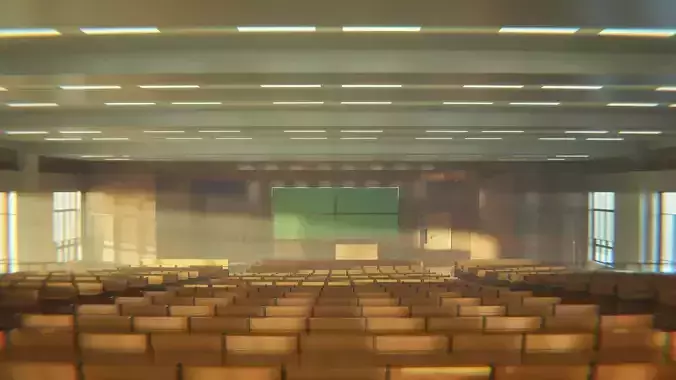1/4
A typical university classroom is designed with functionality and a conducive learning environment in mind. It usually features the following characteristics:
Layout: The classroom often uses a tiered seating arrangement or flat-floor seating. The front is equipped with a podium and a blackboard or an electronic whiteboard. Tiered seating ensures clear sightlines for students in the back, while flat-floor layouts are more suitable for smaller classes or discussion-based sessions.
Desks and Chairs: The desks and chairs are simple yet functional, often in the form of long tables or individual desks with chairs, typically made of metal or wood. The chairs are generally comfortable enough for extended class periods. Some modern classrooms use movable desks and chairs to facilitate group discussions or interactive learning.
Multimedia Equipment: The front of the classroom is equipped with a projector or a large display screen, connected to the lecturer’s computer for presentations, videos, or slideshows. In larger classrooms, sound systems and microphones are available to ensure that all students can hear the lecture clearly.
Lighting and Ventilation: Classrooms usually have large windows to allow ample natural light, along with a good ventilation system. Some classrooms also have blackout curtains to adjust lighting when using projection equipment.
Decor and Colors: The walls are typically painted in light tones like white or beige to create a calm and focused atmosphere. You may find school logos, motivational quotes, or displays of academic achievements on the walls to enhance the educational ambiance.
Power and Internet Access: Modern classrooms are often equipped with multiple power outlets, allowing students to charge their laptops or other devices. Wi-Fi access covers the entire classroom, making it easier for both students and instructors to access online resources.
This design aims to provide a comfortable and focused learning environment, encouraging both communication and critical thinking, while supporting various teaching methods, from traditional lectures to interactive learning.
REVIEWS & COMMENTS
accuracy, and usability.




